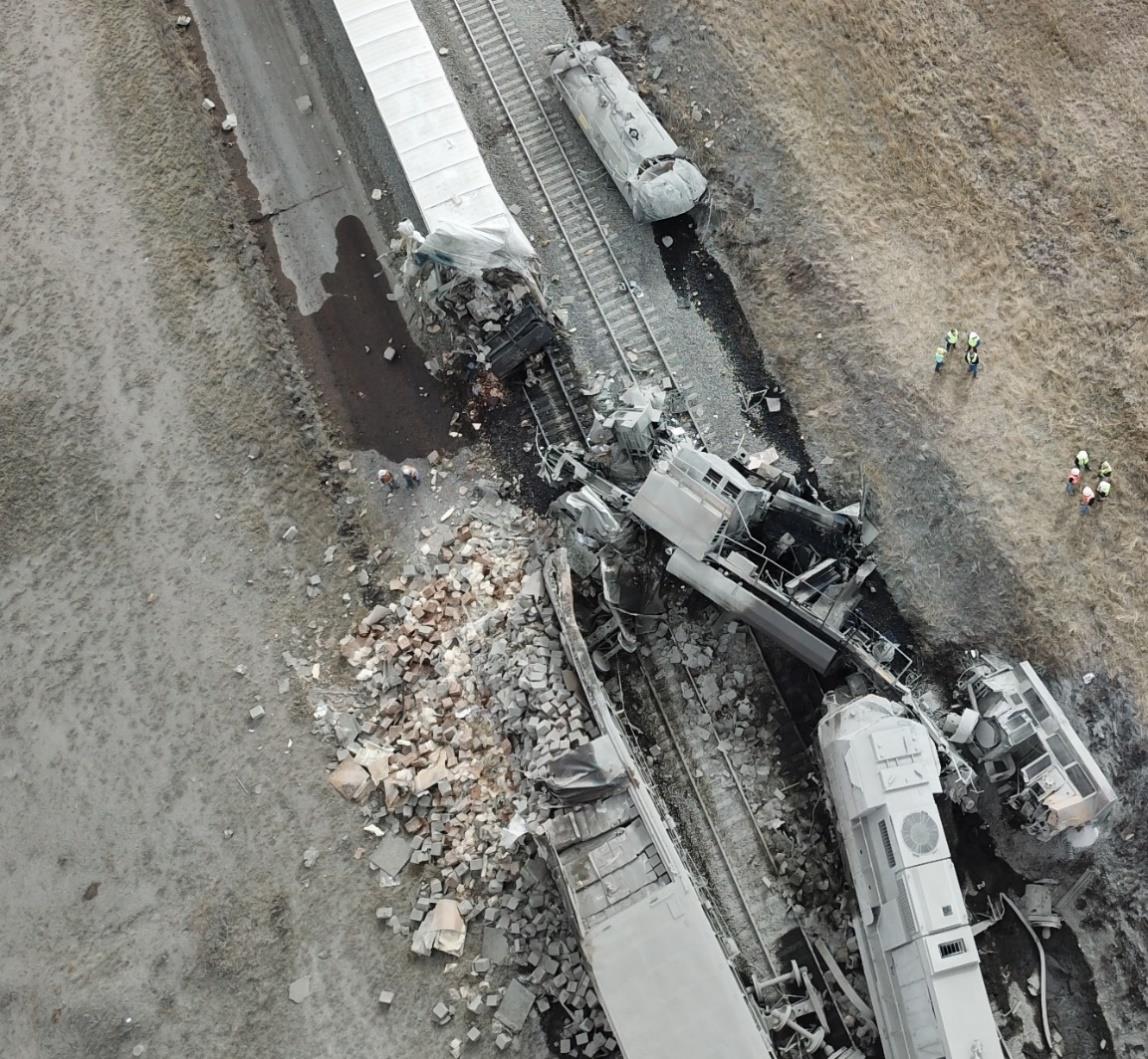National Transportation Safety Board investigators released their early findings on the crash Monday that killed two UP railroaders and damaged two trains in Granite City, Wyo., Oct. 4.
Investigators say that the two-person crew of an eastbound train were controlling their train with dynamic brakes until just after cresting Sherman Hill when they applied the train, or air brakes. Their train’s speed steadily increased from 18 to 19, then 29 mph, when the crew made an emergency brake application. The move failed to apply the air brakes while the train gathered speed, eventually reaching 56 mph when it crashed into the rear of a parked train in Granite City.
The two crew members died in the collision while two additional crew members on the parked train were warned by UP dispatchers to move away from the oncoming runaway.
Positive train control was up and running at the time of the collision.















Thank you for that Stewart. Sounds something like the EPB system the Southern Railway under Oliver Bullied pioneered in the UK back in the ’40s being transferred to freight operation.
Trials done with a 12 coach train at the time showed a much faster response to brake applications over a straight air brake.
One of the tests had the driver (UK parlance for Engineer 😉 ) abuse the straight air brake by applying and releasing it in rapid succession. The instrumentation shewed that the train could end up with adjoining coaches having different brake states as the pressure changes took time to travel the length of the train.
Given the VAST length of freight train you lot run, I’m surprised it hasn’t been tried before!
Good luck, I hope it works and reduces the number of accidents.
Electronically Controlled Pneumatic brakes. Sometimes referred to as E.P.B.
Braden, or anyone else, please explain for an ignorant Limey what EPC is. Electro-pneumatic control perhaps?
Mr. Kayganich – Wouldn’t ECP require every car to be so equipped, or at least be equipped with the trainline cable to activate it? Or can the individual cars be activated by radio signal?
I have to wonder why the crew, when they knew they had a runaway, did not go back to the second or third loco. If they had, they would have survived as the second loco is upright and the cab is intact.
PTC could not have prevented this collision. True. Everyone involved in the industry and in the regulatory agencies knew this going in. But it has, and will, prevent many human error incidents which lead to fatalities and the high cost of restoring service.
Another ‘Runaway’ has just occurred on the North Western Australian iron ore hauler, B.H.P. – Billiton, where he (lone?) crewman got off top investigate a problem and he consist left without him/ her?
These ‘Heavy Haul’ lines (BHP and Rio Tinto) have been testing driver-less trains, well now they are pulling out all stops on that one!
BHP-Billiton operations have been suspended pending inquiries, no other details to hand yet.
Latest news here:-
/www.abc.net.au/news/2018-11-06/investigators-visit-runaway-bhp-iron-ore-train-derailment-site/10469802
@George Pins In order to get the full benefits of ECP yes every car has to be equipped. Current ECP uses a 12volt Cable running parallel to the train air..GE tested radio controlled ECP years ago but the test weren’t favorable..
I’ll say it again ECP should have been the mandatory requirement instead of PTC…
An example, I suppose, where the great and expensive savior of us all, PTC, was of no use. PTC would have applied the brakes, but, no brakes to apply.